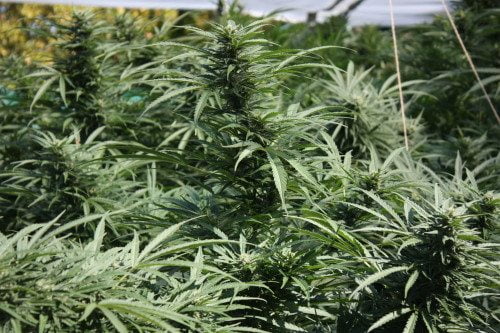

Environment
How the Cannabis Industry Could Be Greener
The sticky green herb is beloved amongst hippies, naturalists, environmental activists, outdoorsmen and pretty much everyone who wants to preserve the beauty and strength of the natural world. It is perhaps surprising to learn, then, that the cannabis industry as a whole is not only unsustainable but recklessly inefficient with regards to energy usage, resource consumption and waste production.
Individual cannabis companies and the industry has a whole should take steps to reduce their footprint and become as eco-friendly as the laws governing them allow. Here are a few important ways weed could easily get greener over the coming years.
Shift to Outdoor Growing
The main problem with the current state of cannabis cultivation is that so much of it occurs indoors. Greenhouse growing provides an incredible amount of control over a farmers’ crop, ensuring that it grows healthy and safe. However, greenhouse growing is also incredibly wasteful, drawing immense amounts of energy and other resources.
When most people think of greenhouses, they imagine airy glass structures that permit light, heat and slight breezes while shielding plants inside from pests, windchill and worse. However, most cannabis greenhouses are windowless warehouses where marijuana grows underneath industrial, electric grow lights. What’s more, greenhouses cannot benefit from natural precipitation or humidity; instead, they have irrigation systems and ventilation usually powered by humidifiers and electric fans. These energy-intensive systems operate 24 hours per day, drawing huge amounts of non-renewable resources.
Cannabis isn’t a particularly finnicky plant — which is largely why it earned the popular name “weed.” In fact, humans discovered the utility of cannabis millennia ago because the plant happily grew in early hunter-gatherer trash heaps. There are many climates in the United States where outdoor growing is not only possible but perhaps more advantageous than greenhouse growing, simply because farmers can take full advantage of free sunlight, rain, pollinators, etc. More important than reducing expenses, outdoor growing reduces the resource consumption of marijuana cultivation, making it much, much greener.
Rely on Renewable Resources
It is worth noting that not everywhere can benefit from outdoor growing. For example, Oregon marijuana is mostly grown indoors because the climate is too wet and cold for the crop. Additionally, some states prohibit cannabis cultivation in the open air, where the public can see and potentially steal the controlled substance.
When outdoor growing isn’t an option, farmers still have the opportunity to reduce their environmental impact and make smart energy choices for the future. For example, greenhouses might be constructed from Earth-safe, recycled or sustainable resources, like hempcrete. Additionally, greenhouses should draw upon renewable energy, installing solar panels or wind turbines to power electric systems inside. Finally, in places that receive sufficient rainfall, growers should use rain barrels and recycled water to grow their crop. Though these might increase a cultivator’s initial investment, they increase the value of the crop, not to mention the grower’s brand.
Ditch Pesticides and Other Chemicals
Marijuana is naturally pest-resistant, but that doesn’t stop many growers from utilizing pesticides to fully protect their crop. Unfortunately, marijuana isn’t always fully washed, meaning that harmful chemical pesticides can remain within the final product, making it into users’ bodies and causing various harms.
Pesticides aren’t the only chemicals used in cannabis cultivation, either. Growers might spread chemical herbicides to kill off weeds competing for their crop’s resources, especially if they are participating in outdoor growing. Chemical fertilizers are also commonly used because they can increase growth speed, affect cannabinoid composition and more. As with pesticides, these chemicals are damaging to both natural environments and eventual consumers.
Some states, like Oregon, have strict rules about chemicals used in cannabis cultivation, but many growers need to commit themselves to a more organic operation. Though organic growing comes with challenges, it ultimately produces a better-quality product.
Replace Plastic Packaging
Many states have strict regulations regarding packaging, requiring products to be hidden or contain child-proof seals that demand plastic use. However, cannabis sellers should search for plastic alternatives wherever they can, considering that most single-use plastics employed in packaging are destined to spend thousands of years in a landfill or else devastate wildlife in their natural environments. Some viable sustainable packaging solutions include bioplastics, paper and wood products and glass, all of which biodegrade or can be recycled by end users.
All agriculture could be greener, but considering that legal cannabis cultivation is such a new concept, farmers and growers have the opportunity to start on the right foot. As the industry develops, most users are hoping for a sustainable system that helps the environment as much as it helps individual consumers.


















